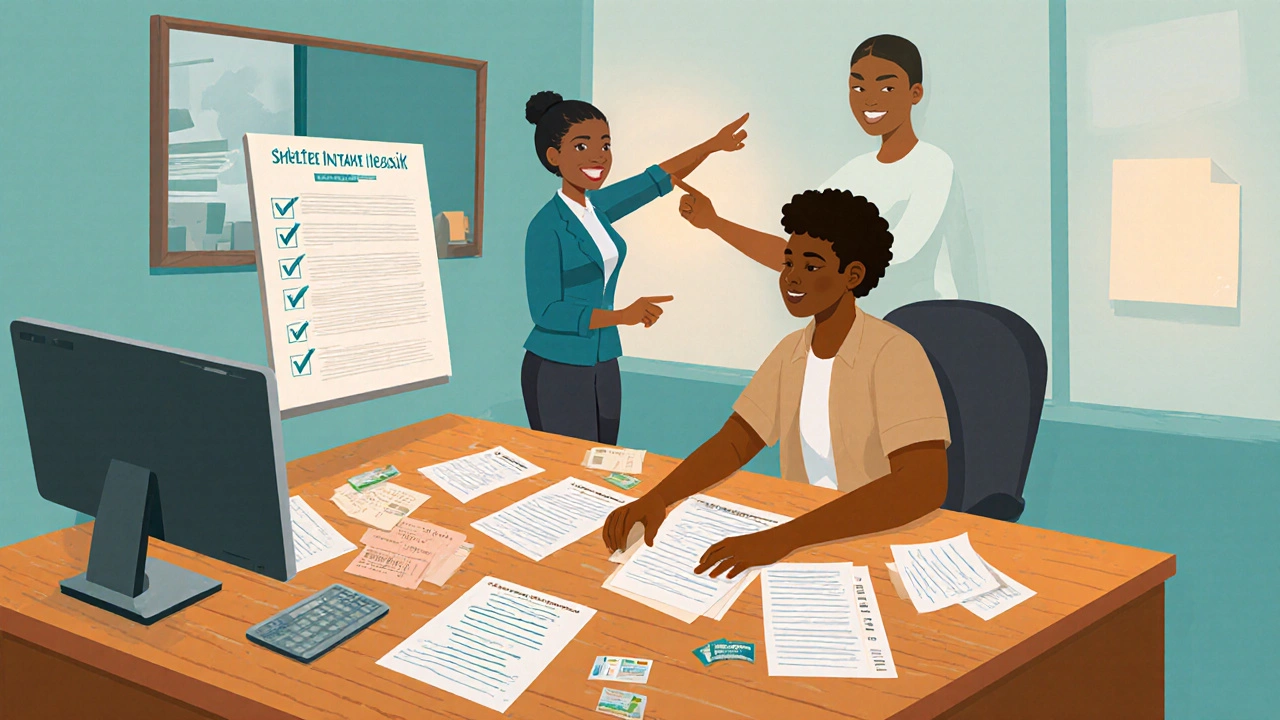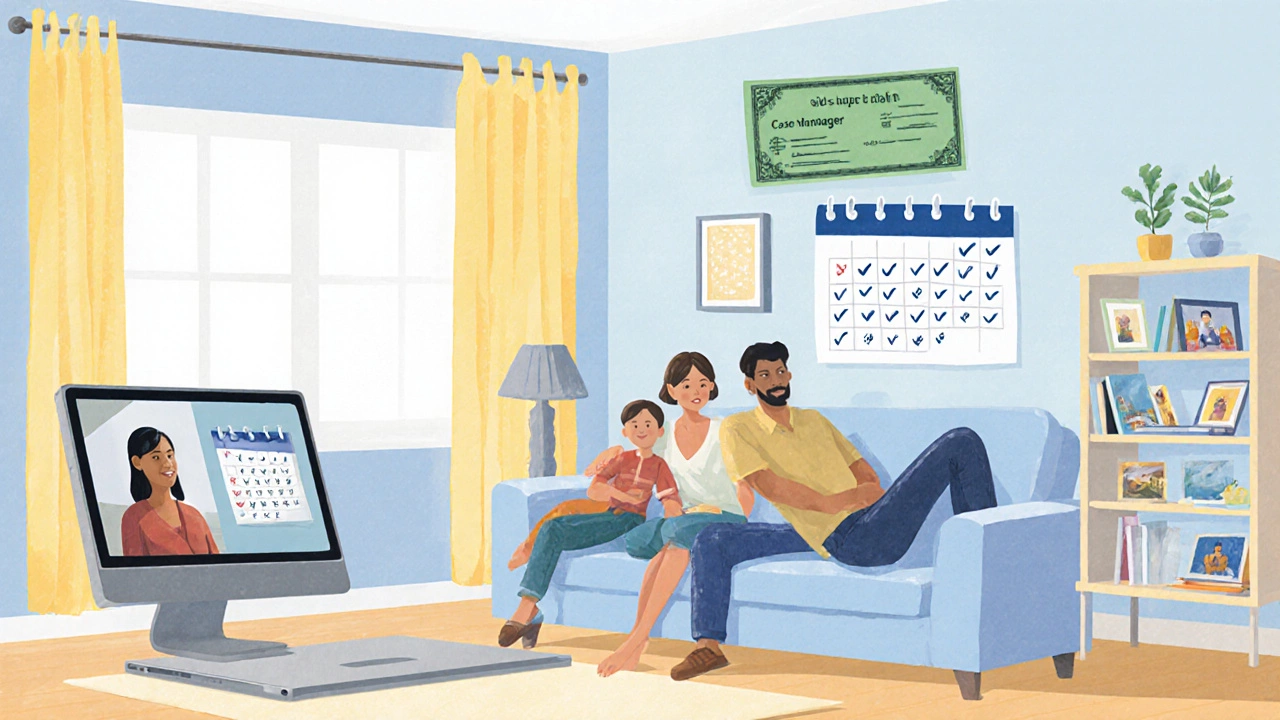Rapid Re-Housing Eligibility Calculator
Check Your Eligibility
Rapid Re-Housing requires your household income to be at or below 50% of your local Area Median Income (AMI). Enter your details below to see if you qualify.
When you hear Rapid Re‑Housing is a short‑term housing assistance program that moves people from homelessness into permanent homes, you might wonder if you qualify. You’re probably asking: Rapid Re‑Housing eligibility-what does it take?
What Rapid Re‑Housing Actually Does
Rapid Re‑Housing is designed to reduce the time a household spends on the streets. It typically covers rent, utilities, and a short case‑management period (often three to six months). The goal is simple: get you into stable housing fast, then give you the tools to stay there.
Who Administers the Program?
The program is funded by the U.S. Department of Housing and Urban Development (HUD) and delivered through local Continuum of Care (CoC) coalitions. Each community’s Local Housing Authority or a designated non‑profit agency runs the day‑to‑day intake, eligibility screening, and rent‑payment process.
Key Eligibility Criteria
While rules can vary a bit by city, most programs share these core requirements:
- Homeless status: You must be currently experiencing homelessness or at imminent risk of it.
- Income limits: Your household income usually must be at or below 50 % of the area median income (AMI) or meet the local Income Guidelines set by HUD.
- Housing readiness: You need a viable rental unit (or a landlord willing to rent) that meets safety standards.
- Case‑management agreement: You’ll sign a short‑term plan with a Case Manager to outline goals like budgeting, employment, and staying housed.
- Citizenship or eligible immigration status: Most programs require U.S. citizenship, permanent residency, or a qualifying immigration status.

Step‑by‑Step: How to Prove You Qualify
- Gather proof of homelessness - a shelter intake form, a letter from a social service agency, or a police report indicating you’re unsheltered.
- Collect recent pay stubs, benefit statements, or tax documents to calculate your income against the local AMI.
- Find a rental unit that accepts the program’s rent‑payment process. Make sure the landlord signs a Housing Lease Agreement that allows third‑party rent payments.
- Contact your nearest Continuum of Care office. Many have online intake portals; others require a phone call.
- Complete the eligibility interview. A case manager will ask about household composition, eviction history, and any criminal background that might affect tenancy.
- Submit the full packet: proof of homelessness, income verification, lease, and any required identification documents.
- Wait for a decision. Most jurisdictions aim to respond within 7‑10 business days. If approved, the program will cover rent and utilities for the agreed period.
Common Pitfalls and How to Avoid Them
Even if you meet the basics, tiny mistakes can stall your application:
- Missing documents: Incomplete income verification is a top reason for denial. Double‑check every page before you submit.
- Lease not approved: The unit must meet local health and safety codes. Ask your landlord for a recent inspection report.
- Unstable income: If you’re on a short‑term gig or cash‑only job, provide a written statement explaining your earnings and any supplemental benefits.
- Ignoring the case‑manager’s plan: The program’s success hinges on you following the agreed‑upon steps, like attending budgeting workshops.
Rapid Re‑Housing vs. Other Housing Options
| Feature | Rapid Re‑Housing | Emergency Shelter | Permanent Supportive Housing |
|---|---|---|---|
| Typical Stay Length | 3‑6 months of rent assistance | Hours to weeks, sometimes months | Indefinite, long‑term |
| Rent/Utility Coverage | Full rent + utilities | None (often free) | Partial rent + utilities |
| Case Management | Short‑term, goal‑focused | Minimal, usually intake only | Intensive, ongoing |
| Eligibility Focus | Homeless + income < 50 % AMI | Any homeless individual | Chronic homelessness, disability |
| Primary Goal | Quick move to permanent housing | Immediate safety and shelter | Long‑term stability and health support |

Finding Rapid Re‑Housing Near You
The easiest way to locate a program is to search for your city’s Continuum of Care map on the HUD website. Many local non‑profits also list eligibility tools on their sites. If you’re in a rural area, the nearest CoC might cover multiple counties, so be prepared to travel for the intake appointment.
Don’t forget these extra resources:
- 211 hotline: Dial 2‑1‑1 in the U.S. for a live operator who can point you to the nearest Rapid Re‑Housing office.
- Local shelters: Even if you’re staying in an emergency shelter, staff often have direct referral relationships with Rapid Re‑Housing providers.
- Community health centers: Social workers there can help you pull together documentation for your application.
Next Steps After Acceptance
Once you’re approved, the program will set up a payment system that sends rent directly to your landlord each month. You’ll meet regularly with your case manager to track progress on goals such as:
- Setting up a bank account and automatic bill pay.
- Finding stable employment or increasing existing income.
- Connecting with childcare, transportation, or health services.
When the assistance period ends, you’ll have a concrete plan for covering rent on your own. Many participants report staying housed for years after the program ends, especially if they followed the case‑management plan.
Frequently Asked Questions
Can I apply if I’m currently staying in a shelter?
Yes. Most Rapid Re‑Housing programs accept applicants who are currently in emergency shelters, as long as you can prove your homelessness and meet income limits.
What if my income is slightly above the 50 % AMI threshold?
Some jurisdictions have a sliding scale that allows up to 80 % AMI for families with children. Check your local CoC’s income chart for exact numbers.
Do I need a U.S. Social Security Number?
A SSN is the most common identifier, but many programs accept an Individual Taxpayer Identification Number (ITIN) or other government‑issued ID if you’re a legal immigrant.
How long does the approval process usually take?
Most areas aim to respond within 7‑10 business days after receiving a complete application. Delays often stem from missing paperwork.
Can I stay in the same unit after the rental assistance ends?
Yes, if you can afford the rent on your own. Your case manager will help you create a budget and connect you with employment or benefit resources to make that transition smoother.
